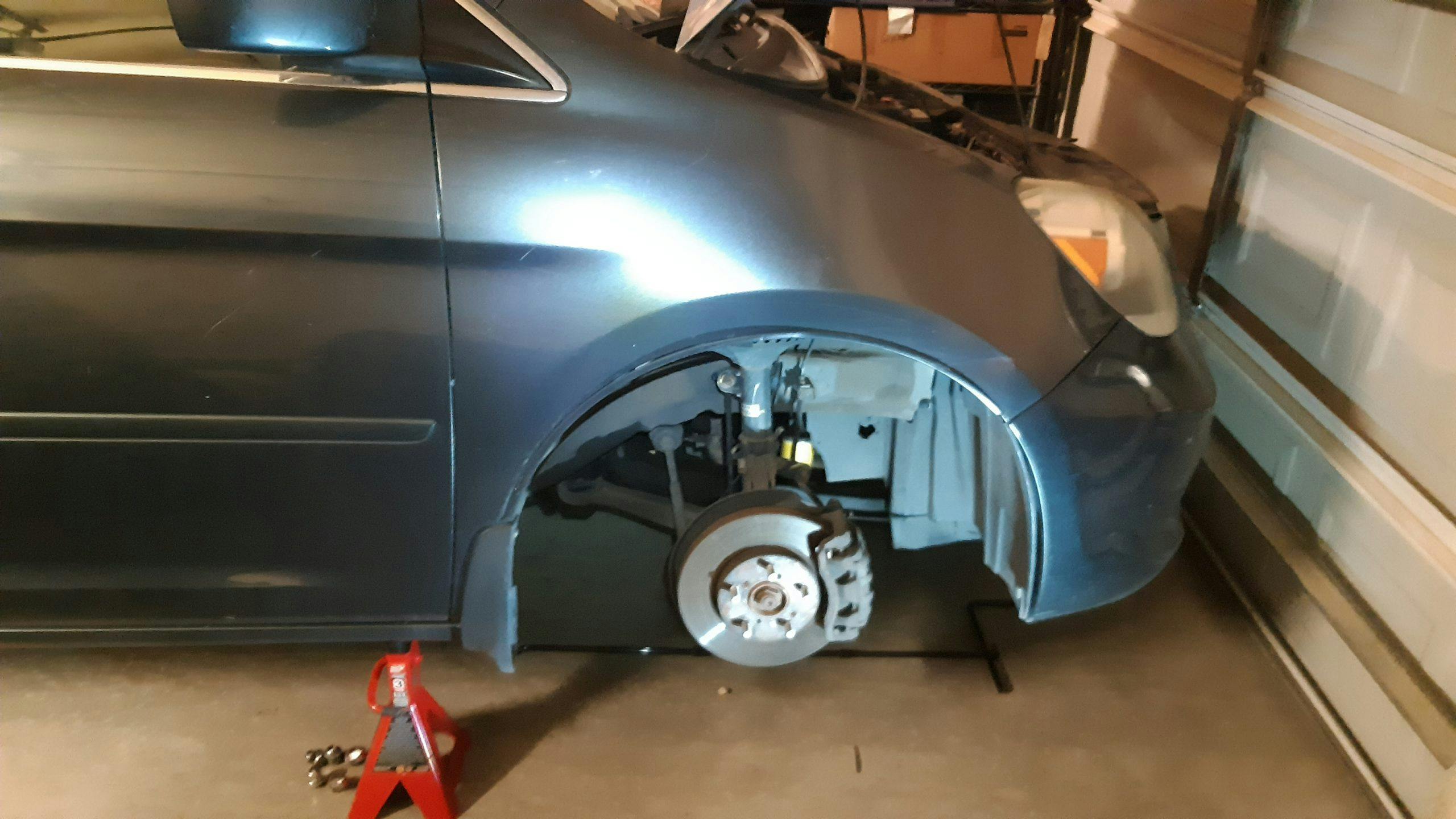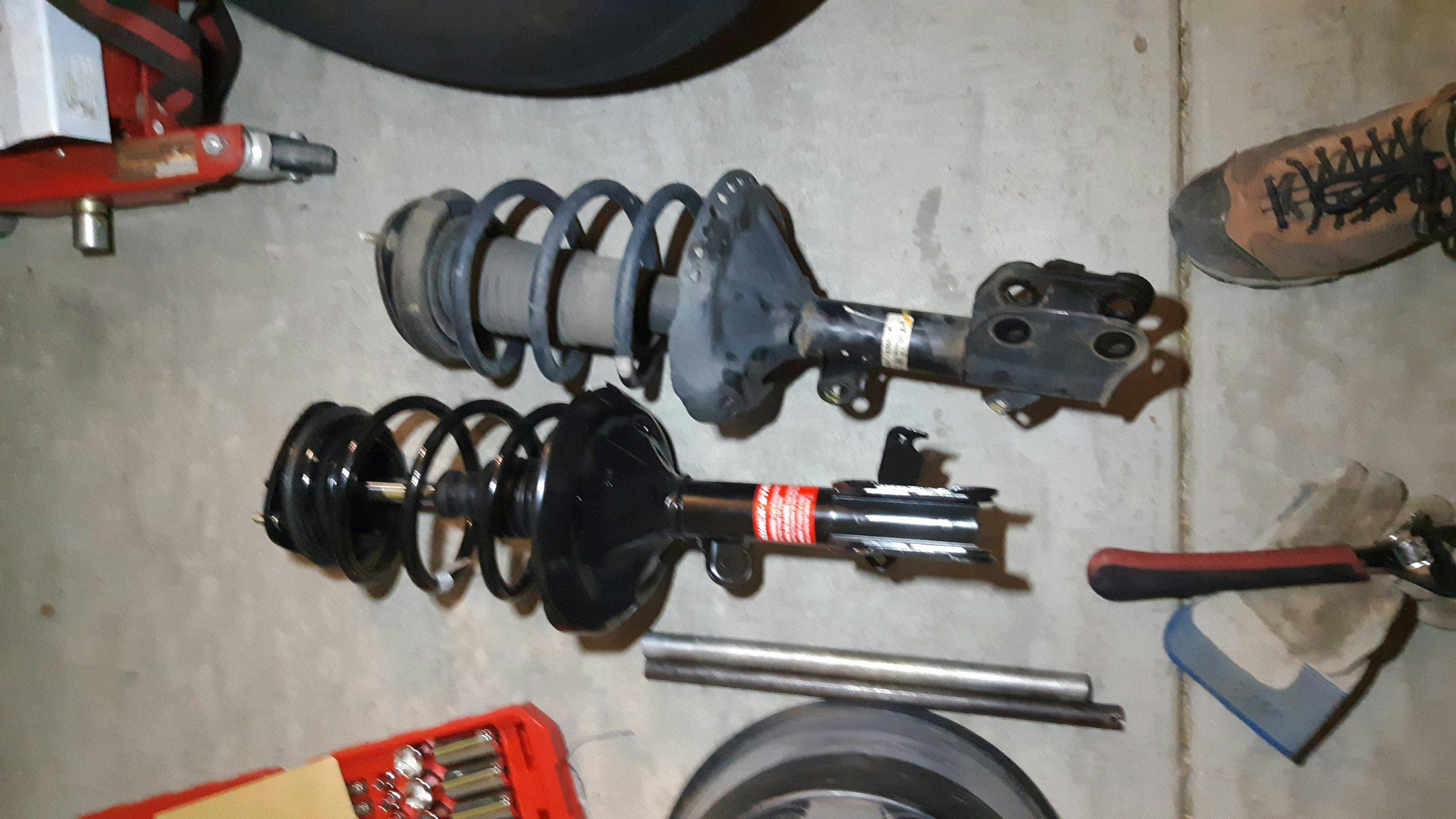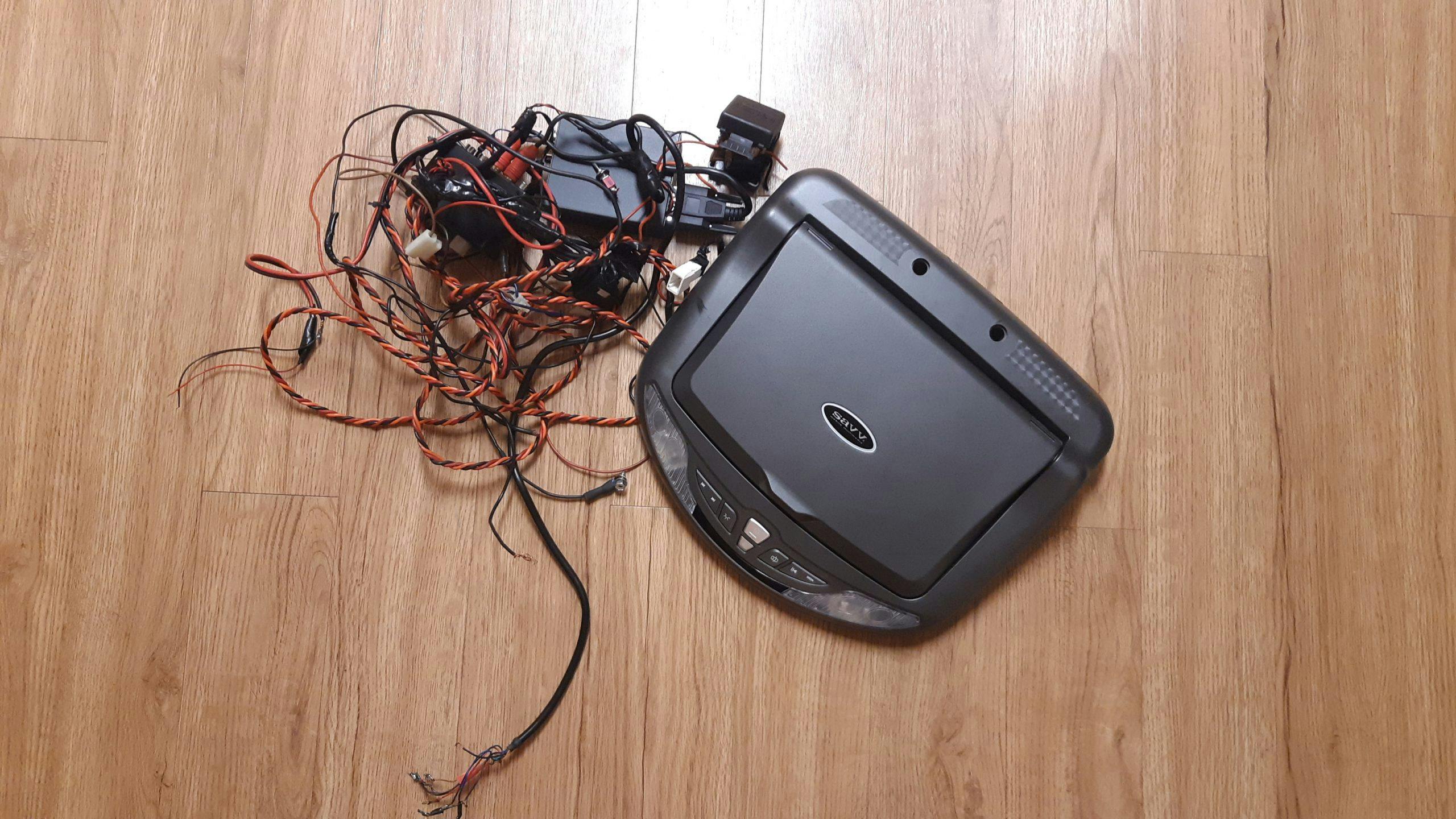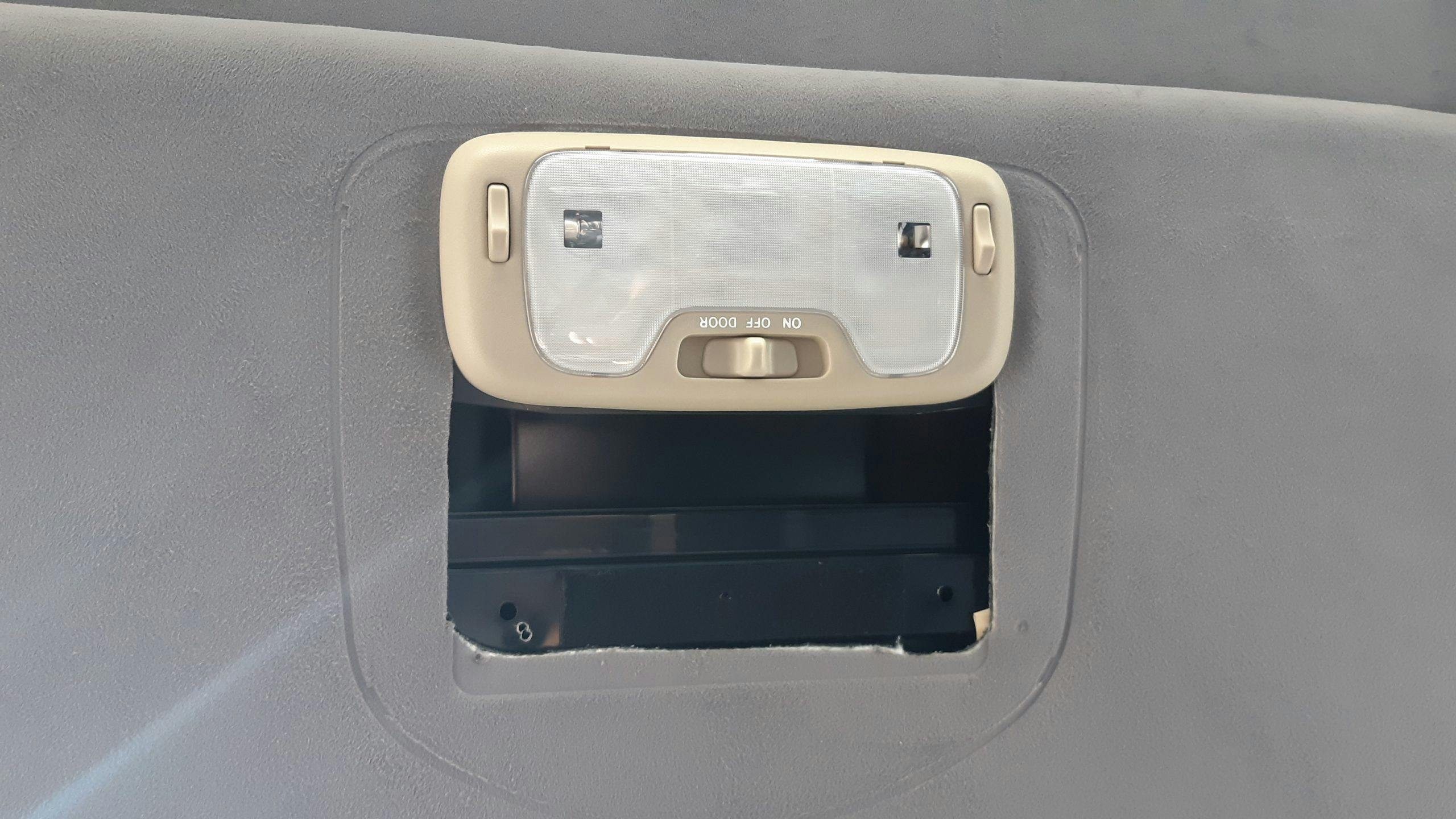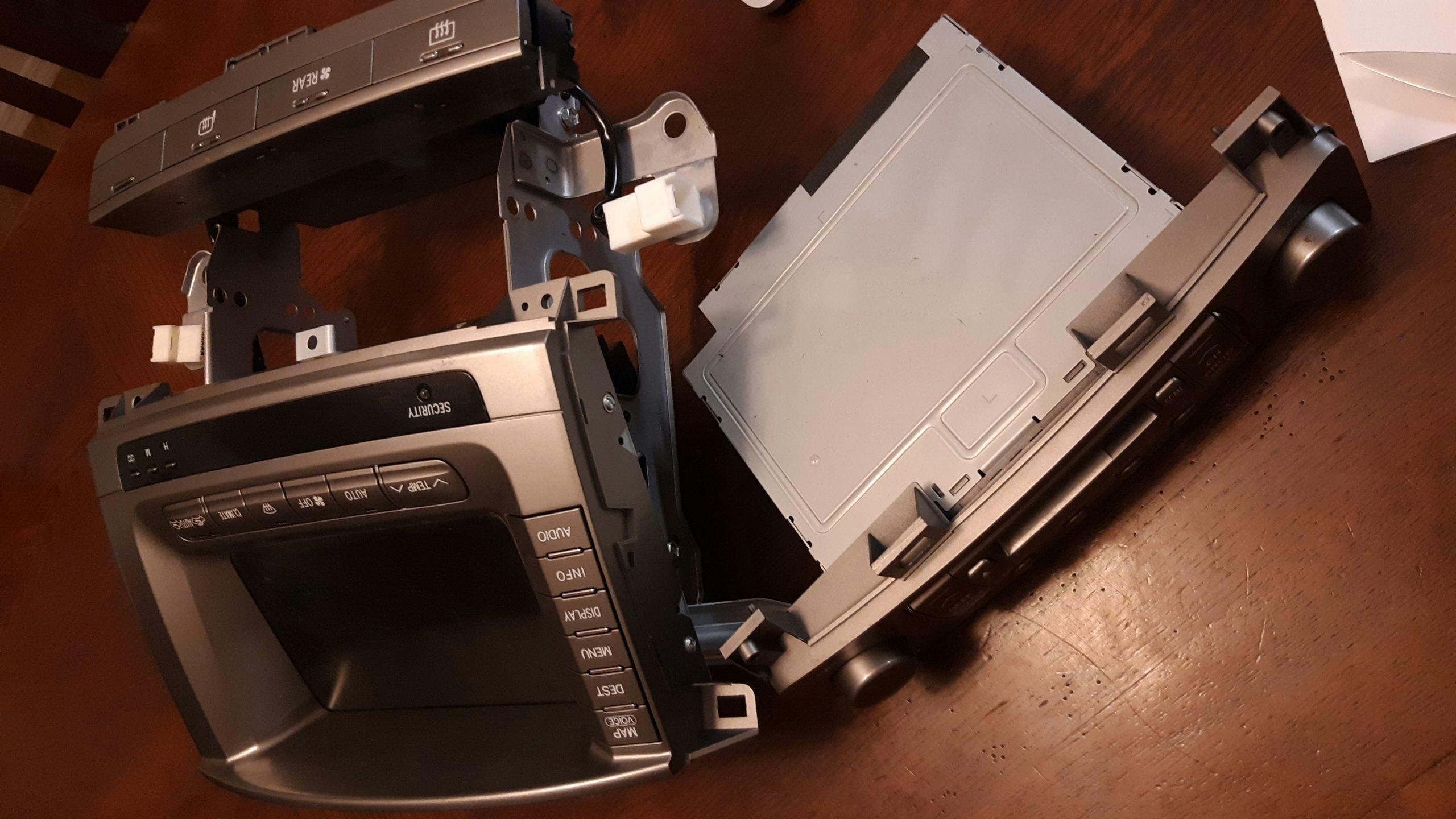Our tame fighter pilot gets shot at, disassembles a Lexus, and ruins a hub
At the risk of stating the obvious, it took me a bit to get used to being shot at. I wouldn’t call the first couple times it happened significant emotional events, but they were nontrivial life moments. Thankfully, the big sky theory provides some built-in protection for fighter pilots, though magic BBs do exist wherein the shooter gets lucky with their potshot and really ruins your day (kind of like “You’ll shoot your eye out!”, but worse). Words to live by: when flying an aircraft, it is highly recommended to not hit, or get hit by, anything attached the ground or that was formerly attached to the ground (aerial refueling being the one obvious exception).
Obvious statement #2: bullets aren’t guided. Once shot, either from another fighter jet or from the ground (generally called either small-arms fire for small caliber stuff or Anti-Aircraft Artillery (AAA) for the bigger, flak-style, stuff), bullets fly on a pretty predictable path for a while before they start tumbling, Greatest American Hero-style, through the air. To paraphrase Kipling, aircrew desire that bullet and jet shall never meet. Rapidly maneuvering your jet to avoid an ill-advised rendezvous with a bullet is called jinking.

In the movies, fighter jets dodge bullets through a series of aileron rolls. In reality, all this rolling would do is allow the bullets to strike all sides of your jet instead of just one. A jink is a violent maneuver (remember, you’re about to get shot so you’re highly motivated to get out of the way), that when executed correctly takes the aircraft out of the plane (dimensional, not aero) through which the bullets are flying; jinking specifically refers to dodging bullets shot by another fighter jet and not from terrestrial-based guns. Unlike Neo reacting to bullets already shot at him, the pilot must proactively predict when the offensive fighter is about to shoot (if you’re getting shot at, or about to be shot at, you’re clearly defensive), and start maneuvering accordingly. If you wait to start jinking until the shooting has started it might already be too late for you. Conversely, commencing the jink too early could run you out of energy (energy = altitude and airspeed; lack of energy means you’re a grape and too slow to maneuver) and make you even more defensive. Doing a series of Hollywood-inspired aileron rolls is worse than doing nothing. If you shoot skeet, think of how hard it would be to shoot a clay pigeon if it started to rapidly and unpredictably climb or descend just as you began squeezing the trigger. That’s the effect we’re going for with a properly-timed, properly-executed, jink.
Dogfights get lower, slower, and tighter (lower in altitude, slower in airspeed, tighter in that the distance between aircraft decreases) as the fight progresses. In training, there’s an altitude “floor” set such that if you descend through it, you’re called “dead” (you’ve hit the simulated ground if you go through the floor). It’s set high enough above the actual bottom of the airspace, or the ground/ocean itself depending on where you’re flying, so if a pilot mistakenly makes an aggressive downhill maneuver without considering the training floor they can recover the aircraft without risk of hitting the ground or aircraft flying below the training airspace. All that to say, at some point in the fight it’s common to be at the floor (no room to maneuver downhill in the vertical) with low airspeed (airspeed = capability to maneuver) and the offensive fighter moving in to take a shot. If this all sounds pretty dire, it’s because it is.

When I was learning to be a fighter pilot, several of my fellow wannabes and I were talking through various tactics with a crusty (experienced) instructor. One topic was the aforementioned scenario: at the floor with minimal airspeed, about to get shot. How was one supposed to jink in that instance? Enter the “floor jink,” a last ditch maneuver that keeps you from hitting the ground while, hopefully, also keeping the bullets from hitting you. A follow up question was next, “How long do you have to do these floor jinks?” His face clouding over with a strange mix of bemusement at our ignorance and deadly seriousness, our instructor leaned towards us and growled, “You jink ‘til you’re dead!” In other words, do whatever it takes to survive another second, five seconds, ten seconds, all the while hoping your opponent makes a mistake and “morts” themselves by hitting the ground or gets shot by one of your buddies before they kill you.
Which brings me to learned helplessness. I’m not referring to the psychological condition that can be a response to trauma, neglect, and/or an abusive situation. Rather than use the textbook definition, this knuckle-dragging, mouth-breathing fighter pilot is using the phrase to describe folks who learned or decided that there are things they just could not possibly do. Ergo, they are stuck, frequently of their own volition, until someone arrives and delivers them from their self-induced incompetence. This is very different than not knowing how to do something; no, these folks have decided they are incapable of doing something. Fix a leaky faucet? Too complicated. Cook a soufflé? Too hard. Change the oil in their car? In the words of Dana Carvey, not gonna do it.
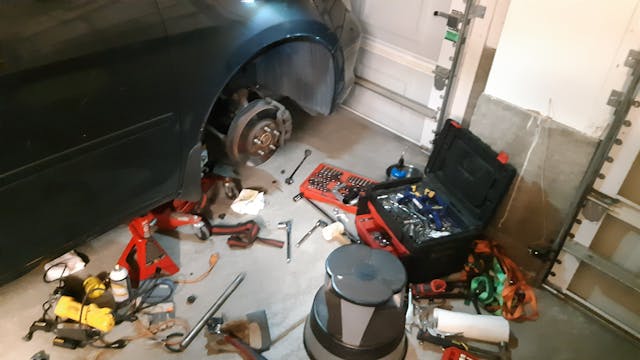
I didn’t grow up working on cars. My dad did a lot of home improvement projects, but never really much work on our family cars. Teenaged me delivered newspapers from my bicycle, and worked fast food and construction jobs, not at a dealership. I didn’t get my first car (1988 silver Nissan Pulsar T-top, no A/C, super cool flip-up headlights) until I was 21 and out of the house. I was enthusiastic to work on my cars but lacked knowledge and/or present-day sources of info like car-specific forums and YouTube videos to upgrade my mechanic skills from hack to shadetree. In one of my first attempts at working on a car, I decided my wife and I’s 1992 Nissan Pathfinder needed new spark plugs (I don’t recall what brilliant insight led me to that diagnosis). I was able to successfully remove all of them from the V-6, but although I tried and tried, I couldn’t reinstall a plug in the cylinder at the rear of the motor by the firewall. The angle was funky and lacking a joint in the middle of my forearm meant I just couldn’t get it to thread. It was a Saturday afternoon and I needed the car running Monday morning, so I started it and limped it down the road on five cylinders to a mechanic who, after laughing at me, had the plug installed in less than 2 minutes. With wounded pride and a wallet $20 lighter, I drove home on all six cylinders.
Lesson learned from this experience? I was helpless when it came to working on cars.
Over the next seven years, I don’t recall doing anything on my cars with the exception of rotating my tires and changing wiper blades. Oil changes, brakes, air filters, etc., were all done at a dealer.
What changed after seven years? I bought my grandfather’s 1969 Jeepster Commando. I also purchased a service manual and joined JeepsterCommandoClub.com. With those resources, and knowing it wasn’t a big deal if I couldn’t finish a project on the Jeepster over a weekend as it was our third car and not required for daily driving, I had enough confidence to start working on cars again. It didn’t hurt that the Jeepster was extraordinarily simple and there was tons of room to work in the engine bay (and that an old school mechanic who loved the Jeepster had a shop 2 miles away).

Four years later when I undertook a frame-off restoration of the Jeepster, my skills were still minimal, although I had worked on our cars in Germany with mixed success (alternator replaced in my 300,000-km Golf, but I limped it to a mechanic to put the belt back on—sense a trend?). As I decided to do the rebuild myself, I clearly remember thinking that people worked on cars and I was a person of some intelligence so I could work on them as well. There were things I didn’t do, like rebuild the engine, but those were generally risk/time management decisions and not decisions rooted in my earlier learned helplessness. For example, I could pay $800 to buy the engine rebuild kit and do it myself or pay $1200 and have a shop fully overhaul, strip, repaint, and rebuild the engine; I was happy to pay the extra $400 for a much better-finished product, completed quickly, that I could be confident in.
I’m no longer afraid to work on my cars, though I do think about how I’d extricate myself if I screwed something up (how would I limp to a shop?). Fortunate to own five cars, I’m not stressed if a repair drags on (my Odyssey was recently down for four weeks as I awaited parts), and the joys of the internet mean it’s (almost) always possible to find someone who meticulously documented via a blog post or YouTube video how to do the next repair I need to attempt.
In recent weeks, I’ve replaced the Odyssey’s front struts/coil springs, stabilizer bars, and control arms, and pulled the nav/radio/HVAC stack from our 2006 Lexus LX470 so I could extract all remaining vestiges of the aftermarket DVD player and install a Bluetooth adapter—a job which required the removal of a whole pile of wires and splicing/repairing the wires cut by the installers. Removing the DVD player itself left a good-sized hole in the headliner that I need to patch, and my doofus self ordered the wrong color light fixture to put back in. Oh well. Still on my plate are the Lexus’s brake pads and rotors, though I admit the wind was taken out of my sails a bit when I realized I have to disassemble the front hubs to replace the rotors (seems like a poor design choice to me). I’ve rebuilt hubs when I restomodded the Jeepster, but it doesn’t mean I like doing it. That was another job I screwed up when I missed a retaining clip on the Jeepster’s front driver’s side hub and resorted to using a puller to remove what I thought was a stuck locking hub; instead, I destroyed the locking hub (a $400 mistake) and only then noticed the offending clip buried in all the grease.
After detonating the hub (So. Many. Bearings.), I told my wife I had good news and bad news. The bad news was that I had destroyed a hub through my stupidity and it would cost $400 to buy a new set. The good news was that $400 was such a small amount compared to the thousands I had already spent that it was like I hadn’t actually spent any at all! She’s much too smart to believe my Mark Twain-inspired statistics.

While I am more confident now, I’m nowhere near hubristic enough to think that I can do anything (I’m still improving my troubleshooting) and some jobs still aren’t worth it to me to undertake myself (I’m still mulling over whether or not I should replace the timing belt in our LX470, a repair for which there is a ton of documentation online, or just take it to a shop). On occasion, circumstances conspire and mandate I pay a shop to fix a mistake or just do an entire repair for me and that’s cool. That’s me managing risk vs. cost vs. time and making a prudent decision, not throwing up my hands and calling a tow truck because my car battery died.
This past Saturday night, I was chatting with a buddy about his drag racer. He’s rebuilding the engine and I was peppering him with questions and telling him about how I hadn’t built the Jeepster’s motor. He told me he had cut the piston rings himself and was just a little nervous about firing up the motor the first time and hoped he hadn’t made a mistake that would destroy it. When asked if he was scared it would shell itself, he said he’s built enough engines—both automotive and jet—that he was confident it would be fine.
I couldn’t help but reflect on how rebuilding a starter with my daughter, reinstalling it and having it work the first time was an awesome feeling. In fact, it was about as awesome as the feeling in the pit of my stomach was terrible when it refused to ever start again and I had to just buy a replacement starter, as happened two years ago with our ’07 Accord.
Helpless? No longer. Learning? Until I’m dead!


